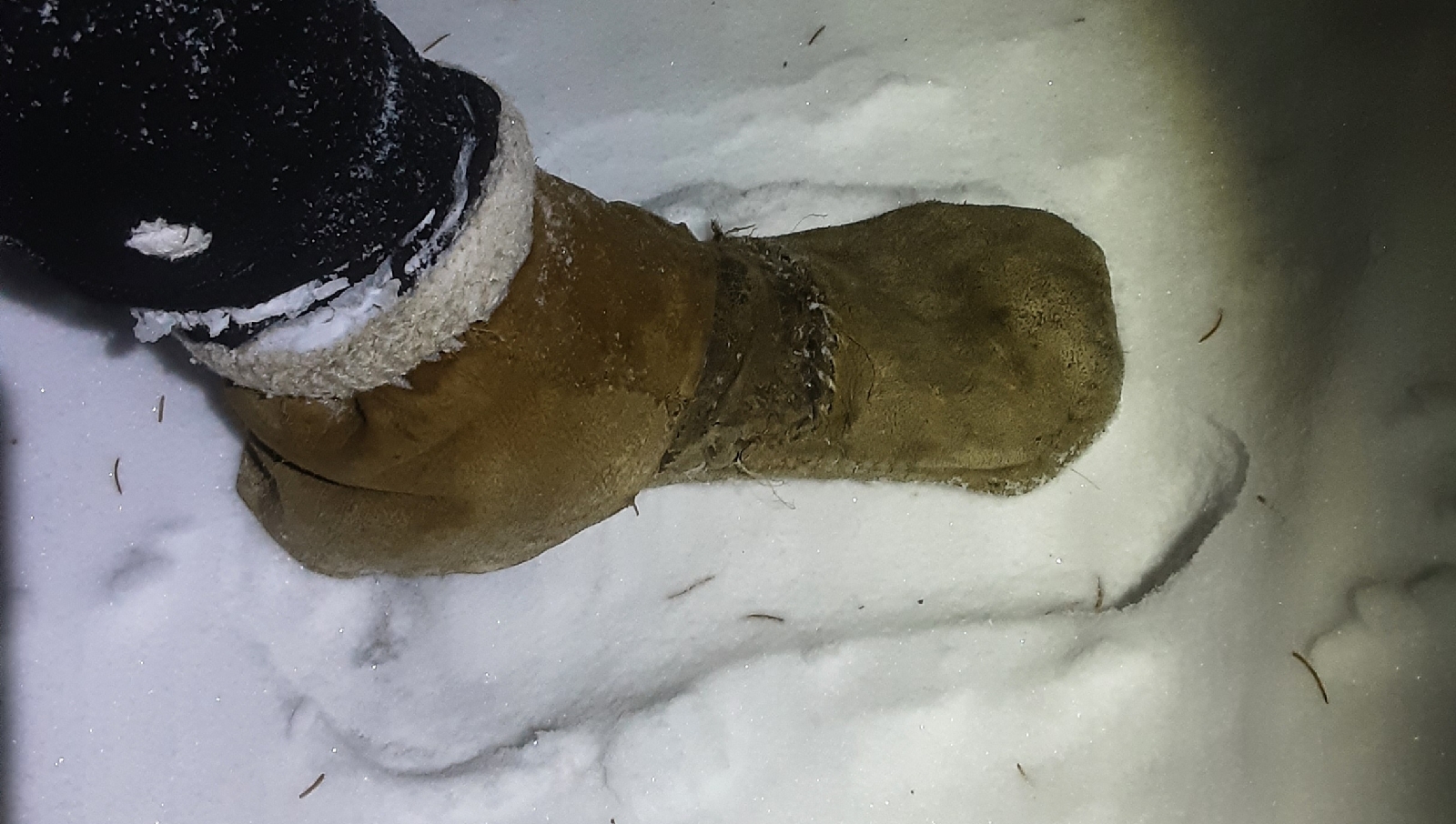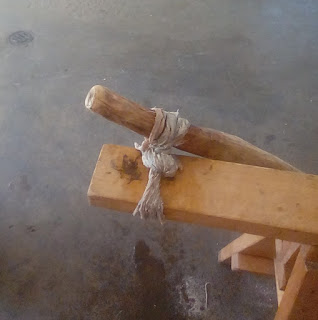Snow Moccasins
There are few expiriances in life as enjoyable and unique as wearing a pair of light toasty deer mocks on your feet while walking in deep fresh snow.
The pinnacle of foot wear for the cold snow. Rubber is a KILLER on or near your foot. The bucked hide, either of deer or moose, breathes - this is critical - and is tough - the latter (rubber) does not breath at all. There is a reason the Canadian military mucluck is made almost entirly from nylon breathable canvas and not heavy leather on rubber.
Moreover, on pack snow, rubber and other hard soled commercial boots will squeak and make a tremendous noise while stepping. A snow mock of smoked moose hide makes no such noise.
Avoid water and rough abrasion.
It does not take much to keep a moving foot warm in cold temperatures—but keep it dry.
Mocs are comfortable, light, natural and quiet in the woods, but near impossible to use during snow melt season for extended periods. The combination of cold and soaking socs and mocs will quickly become unbearable. Consider a bread bag as a liner when needed.
A fur on deer hide sock, in the moose moc, for cold cold temps will take time to make but can work well.
Avoid wearing over two pairs of commercial socks (including wool) as these will cut off circulation and thus cool your foot; you should half wear any additional socks when this is done however, by folding back the shoot portion of the sock so the opening is just forward of the toe of the sock.
Opt for wool socks or wool rags wrapped around the foot for a sock.
The best additional insulation and to keep the foot dry is to stuff it with dry wild grasses when available as this is a free, readily available, biodegradable, easly replaced very warm solution; it’s also abundant in the woods; cut it, dont rip it out, you can cut your hand; replace when damp and/or frozen which should be about every three or four days.
Know that rags if used as insulation, tend to migrate and bunch and are not replaceable when they get wet, frosty, and frozen. They would need to be dried, a chore in the freezing winter.
I have read the escimo used rabbit hide socks for the inside of their boot with dry moss.
As mentioned earlier, use a running stich or any other stitch with an overlap seam. Do not use a whip stitch on smoked skins.
My current preferred approach is to lay a generous inner sole of the moch with worked fur on deer hide. Wear two wool socks in very cold temperatures or one with a buckskin mock or other cloth wrap over the socks. Any cold spots that arise should be covered or stuffed with dry grass.
If you will be out briefly, moving often, I am fine in as low as - 30c temperatures limit with only two wool socks and a tight deer mock. The flexibility, lightness of the foot, simplicity, and complete lack of chemical byproduct make this set up my favorite option. Know however if you will be standing still for long periods, your feet will get cold which can become very dangerous if you have no method of warming them.
A way to soften buckskin, if needed, after repeat water exposure is to rub tallow on the high soak area; not an oil. A hard tallow will more permanently maintain softness. Don't bother with a sole or other high traffic area that will soon need to be replaced.
Keep in mind, buckskin, like most things, never really needs to be thrown out and can rather be repuposed.



